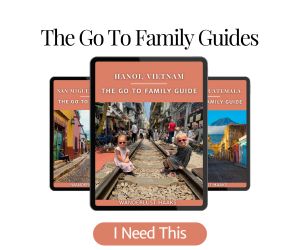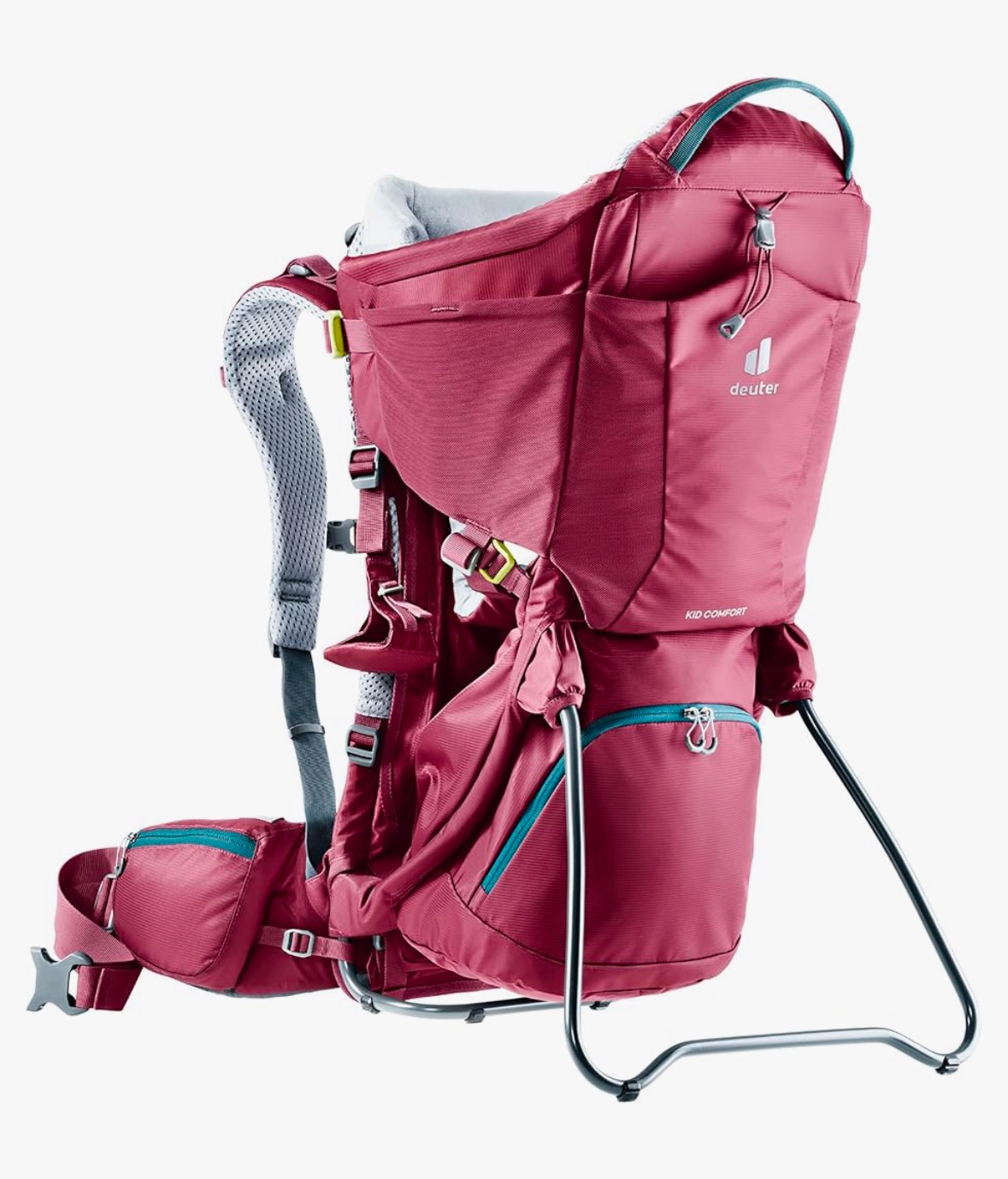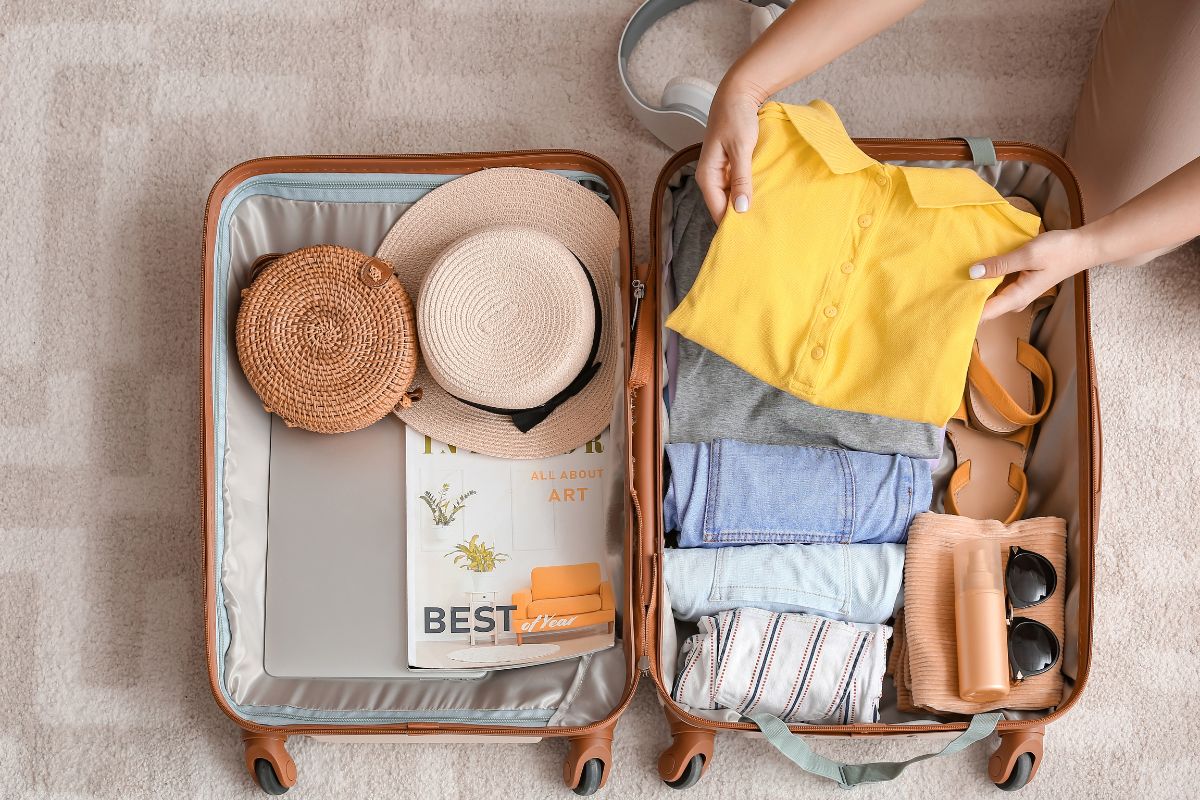When it comes to parenting, some decisions feel bigger than they should, and choosing between a stroller and a child carrier is one of them. Both have their advantages and drawbacks, and let’s be honest—sometimes you wish you could just use both! But what you choose depends on your family’s lifestyle, your travel habits, and your child’s needs. This guide breaks down everything you need to know, so you can confidently make the right choice for your family.
What Are the Key Differences Between a Stroller and a Child Carrier?
The core difference is straightforward:
-
A stroller is a wheeled device that you push, usually with a handle. It’s great for paved areas and allows you to carry additional items like bags or toys.
-
A child carrier is worn on your back (or sometimes your front), with your child seated inside. It’s ideal for uneven terrain, hiking, or places where a stroller would be inconvenient.
Age and Weight Limits
Stroller:
-
Strollers are often suitable for newborns with proper inserts (or travel systems that include a car seat). Many models support children up to 50 pounds or more. Some jogging strollers even go up to 75 pounds, making them great for older toddlers.
Child Carrier:
-
Backpack-style child carriers are typically suitable for babies who can sit up independently, which is usually around 6 months old. These carriers can generally hold up to 40-50 pounds, depending on the model.
-
Front carriers and wraps are better for infants under 6 months and tend to have lower weight limits, typically around 20-30 pounds.
Pros and Cons of Using a Stroller
Pros of a Stroller:
-
Comfort for Parents: A stroller takes the weight off your body, so you don’t need to carry your child or any heavy gear.
-
Extra Storage: Many strollers come with undercarriage storage, cup holders, and compartments for bags, snacks, or toys.
-
Ease of Use: It’s great for smooth, flat surfaces like sidewalks, malls, or airports, and provides a comfortable place for your child to nap.
-
Age Flexibility: With newborn inserts or travel systems, you can use a stroller from birth until your child grows out of it.
Cons of a Stroller:
-
Difficult Terrain: Gravel, dirt paths, cobblestone streets, or uneven trails can make pushing a stroller frustrating, if not impossible.
-
Stairs and Crowds: Strollers are cumbersome in crowded areas or places with lots of stairs.
-
Storage and Transport: Bulky strollers can be hard to store, and even lightweight travel models require space in a car trunk or overhead bin.
Pros and Cons of Using a Child Carrier
Pros of a Child Carrier:
-
Mobility: A child carrier gives you the freedom to go wherever you want, even over rough terrain or in crowded spaces.
-
Compact: It’s easier to transport than a stroller, and you don’t have to worry about folding it or navigating stairs.
-
Hands-Free: Your hands are free while carrying your child, making it easier to multitask.
Cons of a Child Carrier:
-
Physical Strain: While carriers are designed to distribute weight evenly, carrying your child for extended periods can still be tiring.
-
Limited Weight Capacity: Once your child exceeds the weight limit, a carrier is no longer an option.
-
Adjustments Required: It’s essential to get the right size and adjust the carrier properly to ensure comfort for both you and your child.
Which Is Better for Everyday Activities?
When it comes to everyday activities like grocery shopping, school drop-offs, or running errands, the choice between a stroller and a child carrier largely depends on your environment, the type of terrain you encounter, and how much you need to carry. Let’s break it down so you can determine which option makes the most sense for your lifestyle.
Stroller for Everyday Activities
Strollers are often the go-to choice for parents when tackling everyday tasks. They provide a convenient way to transport your child while also giving you extra storage for groceries, backpacks, or even your coffee cup. Here’s why a stroller might work best for certain activities:
Advantages of a Stroller for Everyday Use:
-
Storage Space: Many strollers have storage baskets underneath, which are perfect for holding groceries, diaper bags, or school supplies. Some strollers even come with built-in cup holders and parent organizers, making errands even easier.
-
Comfort for Your Child: Strollers offer a comfortable and secure space for your child to sit or nap while you’re out and about. Many models also have adjustable reclining seats, so your little one can relax while you shop or run errands.
-
Ease of Movement on Flat Surfaces: Strollers perform best on smooth, flat surfaces like sidewalks, paved roads, and store aisles.
-
Hands-Free for Larger Loads: You can hang bags on the handles (if the stroller is sturdy) and use the basket for larger items, freeing your hands for other tasks.
Challenges of a Stroller for Everyday Use:
-
Navigating Tight Spaces: In crowded areas or narrow spaces, such as small grocery stores, strollers can feel bulky and challenging to maneuver.
-
Stairs and Public Transportation: If your daily routine involves stairs, subways, or buses, carrying or collapsing a stroller can be inconvenient, especially if you’re on your own.
-
Terrain Limitations: Strollers work well on flat surfaces, but uneven sidewalks, gravel, or dirt paths can make pushing a stroller difficult.
Child Carrier for Everyday Activities
Child carriers are a practical alternative, especially for parents who live in cities, use public transportation, or frequently encounter uneven terrain. They offer hands-free convenience and the ability to move through crowded spaces with ease.
Advantages of a Child Carrier for Everyday Use:
-
Mobility and Agility: A child carrier allows you to move quickly and easily through tight or crowded spaces, such as busy subway platforms or crowded markets. You don’t have to worry about navigating around obstacles like stairs or narrow doorways.
-
Close Parent-Child Connection: A child carrier keeps your child close to your body, which can be soothing for them and allows for easier interaction as you go about your day.
-
No Terrain Limitations: Whether you’re walking on uneven sidewalks, cobblestone streets, or dirt paths, a child carrier is more adaptable than a stroller.
-
Compact and Lightweight: Child carriers are much easier to store and transport than strollers, especially if you’re using public transportation or traveling light.
Challenges of a Child Carrier for Everyday Use:
-
Physical Strain: Carrying your child for extended periods can become tiring, even with ergonomic designs. The weight of your child and the carrier will primarily rest on your hips and shoulders, which might not be comfortable for everyone.
-
Limited Storage: While some child carriers have small pockets or compartments, they don’t offer the same storage capacity as a stroller. This means you’ll need to carry an additional bag for essentials like diapers, snacks, or groceries.
-
Weather Protection: Unlike strollers with sunshades or rain covers, child carriers expose your child to the elements. However, many brands offer add-on covers to address this.
Scenarios to Help You Decide
Here are some common scenarios to guide your choice:
-
Suburban Errands (Flat Sidewalks, Parking Lots): A stroller is the clear winner here. It provides storage for groceries and other items, and your child can sit comfortably while you get your errands done.
-
City Living (Public Transportation, Stairs): A child carrier is far more practical in urban environments. You’ll avoid the hassle of lifting or folding a stroller while navigating tight spaces or crowded buses and subways.
-
Combination Tasks (Errands + Walking or Exploring): If your day involves errands followed by a walk through a park or uneven terrain, a child carrier is the more versatile option.
What About Crowded Areas?
Crowded spaces like festivals, busy markets, or events can be challenging to navigate with a stroller. A child carrier is ideal in these situations because you don’t have to worry about weaving through people or finding space to park the stroller. Additionally, carriers keep your child securely on your back or front, so they’re always with you, even in chaotic environments.
Stroller and Child Carrier Combination
If you’re able to, having both a stroller and a child carrier can provide maximum flexibility. For example:
-
Use a stroller for grocery shopping, long errands, or places with smooth terrain.
-
Use a child carrier for shorter trips, public transportation, or situations where mobility is key.
However, if you want to minimize what you’re carrying and avoid the need for multiple items, consider your daily activities and the terrain you encounter most often to make the best decision.
Our Recommendation
-
Choose a Stroller if your daily activities involve flat sidewalks, suburban streets, or running errands that require extra storage space. A stroller is especially useful if you’re frequently carrying bags or need your child to have a comfortable place to nap while you’re out and about.
-
Choose a Child Carrier if you live in a city, regularly use public transportation, or encounter stairs and crowded spaces. It’s also the better choice for families who value mobility and want to navigate with fewer restrictions.
Final Tip: Test Both Options
Whenever possible, try out both a stroller and a child carrier before purchasing. If you’re considering a stroller, take note of how easy it is to maneuver, fold, and store. For a child carrier, make sure it fits your body comfortably and distributes the weight properly.
Ultimately, the best choice depends on your unique lifestyle and needs, but with this guide, you’ll be well-prepared to make the decision that works best for your family.
Airline Restrictions: Strollers and Child Carriers
Flying with kids requires some extra planning, and knowing the airline policies for strollers and child carriers can save you headaches at the airport.
Stroller Policies:
-
Gate Checking:
-
Most airlines allow you to gate-check a stroller for free. This means you can use the stroller up until boarding and pick it up right after landing. However, strollers that don’t fold compactly or exceed weight limits may need to be checked with regular luggage.
-
-
Carry-On Travel Strollers:
-
Some compact travel strollers, like the Babyzen YOYO, are small enough to fit in overhead bins. This eliminates the need for gate-checking and ensures your stroller stays with you throughout the flight.
-
-
Weight and Size Limits:
-
Airlines often have weight or size restrictions for strollers, so check with your airline before traveling to avoid surprises.
-
Child Carrier Policies:
-
Carry-On:
-
Child carriers are typically considered personal items and can be brought on board without issue. They are small enough to fit under the seat or in the overhead bin.
-
-
Checked Luggage:
-
If your child carrier has a frame (like a hiking backpack), it may need to be checked, depending on its size. Always check with your airline for specific guidelines.
-
Cost Comparison: Stroller vs. Child Carrier
When deciding between a stroller and a child carrier, cost is a significant factor for most families. It’s important to not only look at the upfront costs but also consider long-term value, versatility, and how well the product aligns with your family’s needs and lifestyle. Let’s break down the costs, features, and benefits of each option so you can make an informed decision.
Stroller Costs
Strollers come in a wide range of price points, depending on the type, brand, and features. Here’s a breakdown of what you can expect to spend:
1. Budget Strollers: $50–$150
-
Best for: Short-term use, occasional travel, or families on a tight budget.
-
Features: These are typically lightweight umbrella strollers with basic functionality. They often lack storage space, reclining seats, or advanced safety features.
-
Examples: Kolcraft Cloud Plus, Summer Infant 3Dlite.
-
Drawbacks: Limited durability, fewer comfort features, and not ideal for rough terrain or long-term use.
2. Mid-Range Strollers: $200–$500
-
Best for: Everyday use, urban environments, and families looking for a balance of features and affordability.
-
Features: These strollers offer better materials, adjustable seats, larger storage baskets, and improved maneuverability. They’re also typically more durable and include better suspension systems for smoother rides.
-
Examples: Baby Jogger City Mini GT2, Graco Modes Pramette.
-
Drawbacks: While versatile, mid-range strollers can still be bulky for travel and may lack the premium features of high-end models.
3. High-End Strollers: $600–$1,000+
-
Best for: Families looking for premium features, long-term durability, and stylish designs.
-
Features: High-end strollers often include advanced suspension, reversible seats, car seat compatibility, compact folding mechanisms, and luxurious materials. Some models are designed specifically for travel and can fold small enough to fit in overhead bins.
-
Examples: UPPAbaby Vista V2, Bugaboo Fox 5, Babyzen YOYO2.
-
Drawbacks: High cost may not be practical for families who won’t use the stroller frequently or those on a budget.
Child Carrier Costs
Child carriers, like strollers, vary in price depending on their design and intended use. Here’s what you can expect:
1. Basic Soft Carriers: $50–$100
-
Best for: Newborns and young infants, everyday use, and short walks.
-
Features: Soft carriers are lightweight, easy to use, and typically worn on the front. They’re perfect for infants but often have lower weight limits.
-
Examples: BabyBjörn Original Carrier, Infantino Flip 4-in-1.
-
Drawbacks: Limited support for parents and children as they grow, and less suitable for extended use or outdoor adventures.
2. Structured Backpack Carriers: $150–$300+
-
Best for: Active families, hiking, and travel.
-
Features: These carriers are designed for toddlers and older babies who can sit upright. They include padded shoulder straps, hip belts, sunshades, and storage compartments, making them ideal for long trips and uneven terrain.
-
Examples: Deuter Kid Comfort, Osprey Poco Plus.
-
Drawbacks: Heavier than soft carriers, and higher price points may deter families who don’t plan on outdoor adventures.
Features to Look For in a Stroller or Child Carrier
Stroller Features:
-
Safety: Look for a five-point harness and sturdy brakes.
-
Size and Weight: Lightweight models are easier to carry and store.
-
Durability: Choose materials that can withstand wear and tear.
Child Carrier Features:
-
Comfort: Look for padded straps, a supportive waistband, and adjustable features.
-
Safety: Ensure the carrier fits your child snugly with a secure harness.
-
Extras: Sunshades, storage compartments, and rain covers are great additions for outdoor use.
Stroller or Child Carrier for Outdoor Adventures
For outdoor activities, a child carrier is the better choice. It’s designed for hiking, rough trails, and uneven terrain, giving you freedom of movement. If you’re committed to a stroller, look for an all-terrain model with large, sturdy wheels—but be aware that these can be bulky and expensive.
Tips for Making the Right Choice for Your Family
-
Think About Your Lifestyle: Are you an urban parent or an outdoor enthusiast?
-
Plan Ahead: Consider the environments you’ll be in, like smooth sidewalks or hiking trails.
-
Test Before You Buy: Go to a store and try out different models to find what’s most comfortable for you and your child.
Conclusion
Choosing between a stroller and a child carrier doesn’t have to be overwhelming. By considering your family’s needs, travel plans, and lifestyle, you can find the option that works best for you. Whether you’re strolling through a park or trekking up a mountain, the right gear can make all the difference in your adventures.
If you found this guide helpful, share it with other parents or drop your questions in the comments. Let’s make traveling with kids easier—and way more fun!







